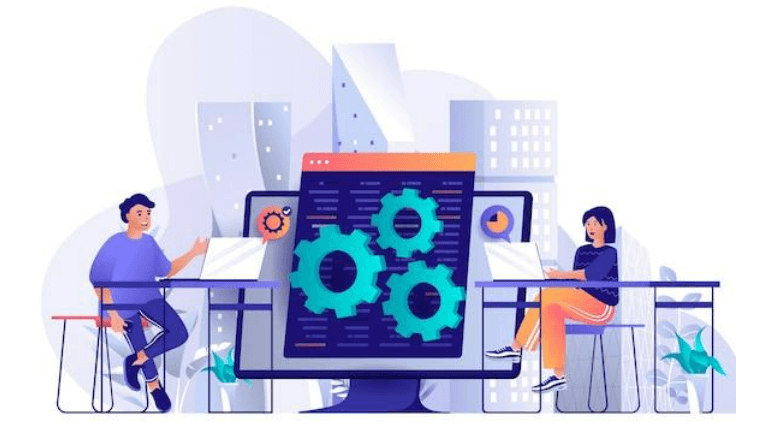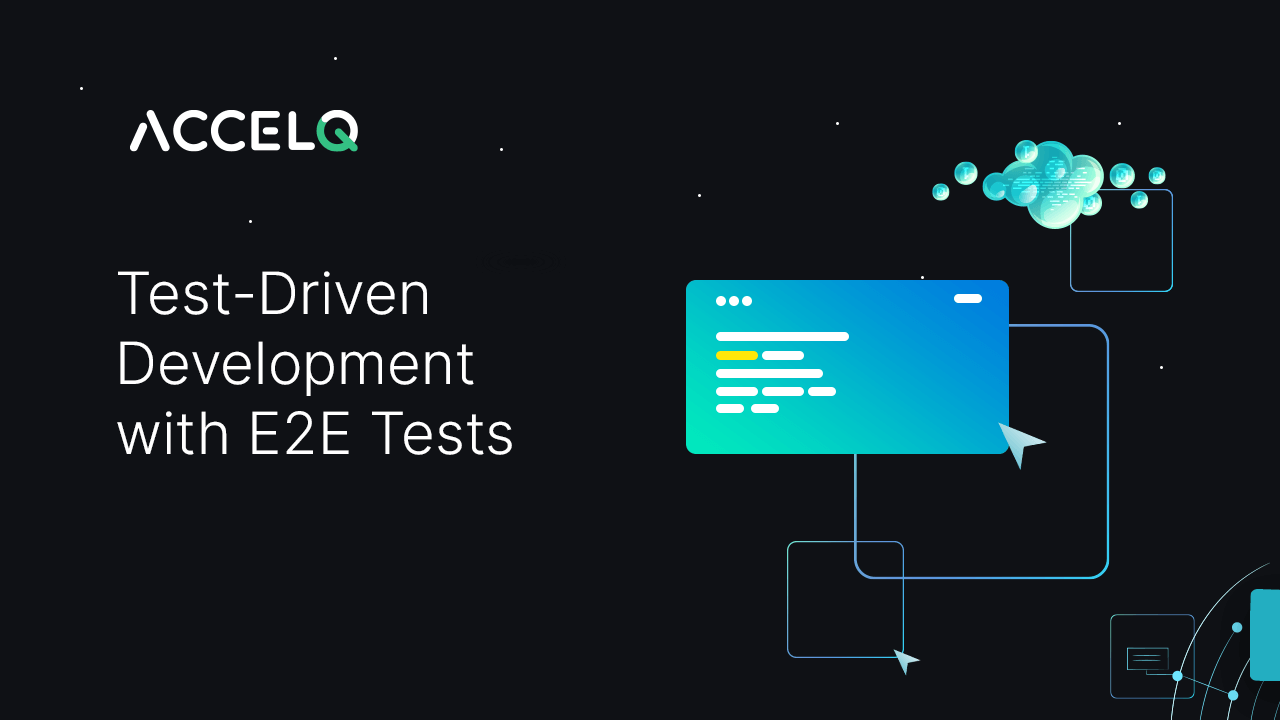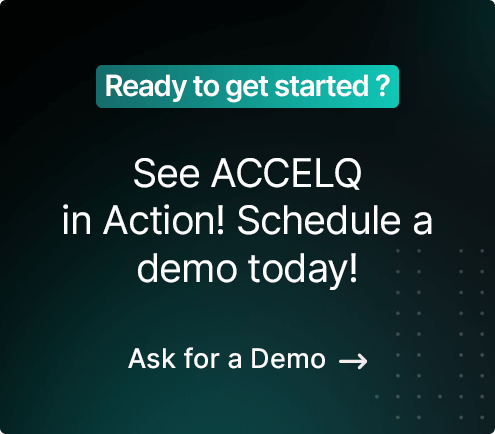Elevating Test-Driven Development with E2E Tests

As the focus on testing intensifies, testing teams are realizing the importance of testing before development – rather than after. This has led to the popularity of test-driven development via E2E tests.
What Is Test-Driven Development?

Test-driven development, or TDD, is a software development approach that converts software requirements into test cases before the software is fully developed. Unlike traditional approaches where testing happens after development, test-driven development ensures testing happens alongside development.
Test-driven development ensures test cases for every feature are written before development. Furthermore, testing the software against all test cases repeatedly during its development helps teams comprehend how to test the application from the beginning rather than later in the development lifecycle.
Why Should Teams Focus on Test-Driven Development?
When writing code for any software product, organizations tend to push developers onto the next feature, neglecting the crucial task of testing. Test-driven development allows teams to take an iterative approach to development, emphasizing writing test cases before writing the actual feature or function.
Taking a TDD approach allows organizations to place as much importance on testing as on development, allowing for:
- A deeper and earlier understanding of product requirements.
- Easy writing, debugging, and maintenance of loosely coupled modular code.
- Improved effectiveness and quality of code.
- Quicker and more effective identification and detection of bugs/issues.
- A continual focus on software quality.
- Easier refactoring and rewriting of code, as required.
What Benefits Do E2E Tests Offer in the Realm of Test-Driven Development?
Today’s software systems have become increasingly complex and interconnected with numerous subsystems. If any of the subsystems fails, the entire software system could crash. This is a major risk, but end-to-end testing can help avoid it.
End-to-end or E2E tests play a huge role in test-driven development. They help teams test the entire software product from beginning to end and ensure the application flow behaves as expected. In addition, by defining the product’s dependencies upfront, they ensure all integrated pieces work together as expected.
Traditionally, test-driven development has required teams to write test cases to test every aspect of the software in one go. But writing entire test suites in one stroke can get extremely challenging. To make things simpler, testing teams had two options in hand:
1. Write Smaller Tests
Writing smaller tests enables teams to eliminate the chances of more code being written than necessary. For instance, using the right tools, teams can take tiny steps towards efficient and timely testing. They can write small test cases to test a small part of any application. If it fails, they can rewrite the code to make the test pass. If it passes, they can determine if they need to refactor the code.
2. Write End-to-End Tests
Writing E2E tests is another way to check if every line of code is correctly wired. This requires teams to write an end-to-end test. If it fails, they must determine the components they need to make that end-to-end pass. For each of these components, they can then write test cases in a regular TDD style.
Writing E2E tests offers far more advantages than writing smaller tests. Teams can:
- Get more feedback to improve the internal design
- Ensure the correctness and overall health of applications in their entirety
- Expand test coverage and detect bugs across various components, APIs, and subsystems
- Verify workflows end-to-end and identify issues associated with different features and components
- Test across multiple applications and user groups as compared to a single piece of code or application
- Ensure testing happens continuously, even after the code has been edited and changes have been made
What Are Some Best Practices for Enabling Test-Driven Development with E2E Tests?
If you want to enable test-driven development with E2E tests, here are some best practices to follow:
Create a List of Features
Before beginning the process of E2E testing, it is essential to create a list of which UI, functions, or features need testing. Instead of trying to achieve 100% test coverage, identify features that are a good fit for E2E test suites. This will help ensure all critical aspects of the software are considered for the testing process while avoiding unnecessary testing complexity.
Follow the End-to-End Testing Lifecycle
E2E tests consist of four main components. These are:
- Test planning
- Test design
- Test execution
- Results analysis.
When writing E2E tests, it is important to cater to each of these components across the testing lifecycle — from specifying key tasks to creating a schedule, determining roles and responsibilities, etc. You should also finalize test specifications, evaluate test case generation, and conduct a comprehensive risk analysis. Also, make it a point to analyze test results and conduct additional testing if required.
Test Horizontally and Vertically
In test-driven development, E2E tests can be carried out in two ways. Horizontally across the context of multiple applications and vertically across the different layers of the application. For the best results, it makes sense to test horizontally and vertically to ensure the quality of each component and the seamlessness of integration with other systems.
Track Data Flow Between Systems
Tracking data flow between systems to find dependencies, flaws, and inaccuracies is also essential to E2E testing. Make sure to prepare the conditions and have clarity on factors that may change interface options – before testing.
Break Complex Workflows
In test-driven development, duplicate tests are a common phenomenon. To avoid this, it makes sense to break or separate complex workflows into smaller, focused tests. This can help you stay within scope and troubleshoot issues faster while also reducing maintenance costs and efforts.
Build Tests That Adapt
E2E tests often time out and fail for applications that take too long to load. Since load times are affected by a bunch of different factors, the probability of false positive tests is high. Therefore, a best practice is to ensure tests that can adapt to aspects such as load time fluctuations. This can ensure that tests execute only when the application is ready.
Conclusion
Today’s software systems span multiple devices, channels, and touchpoints. Testing each component, API, and line of code can be extremely difficult. However, test-driven development via E2E tests can make this extremely easy.
Testing software products from the end user’s perspective empowers teams to simulate real-world scenarios and validate the system under test (and its components) across various parameters. From integration to data quality and more, incorporating E2E tests in test-driven development can truly transform the test process. Get in touch with us to learn more about the viability of E2E tests and how you can go about leveraging them.
Related Posts
 Testing in Microservices Architecture with ACCELQ
Testing in Microservices Architecture with ACCELQ
Testing in Microservices Architecture with ACCELQ
 What Is a Data Pipeline? Considerations & Examples
What Is a Data Pipeline? Considerations & Examples



































